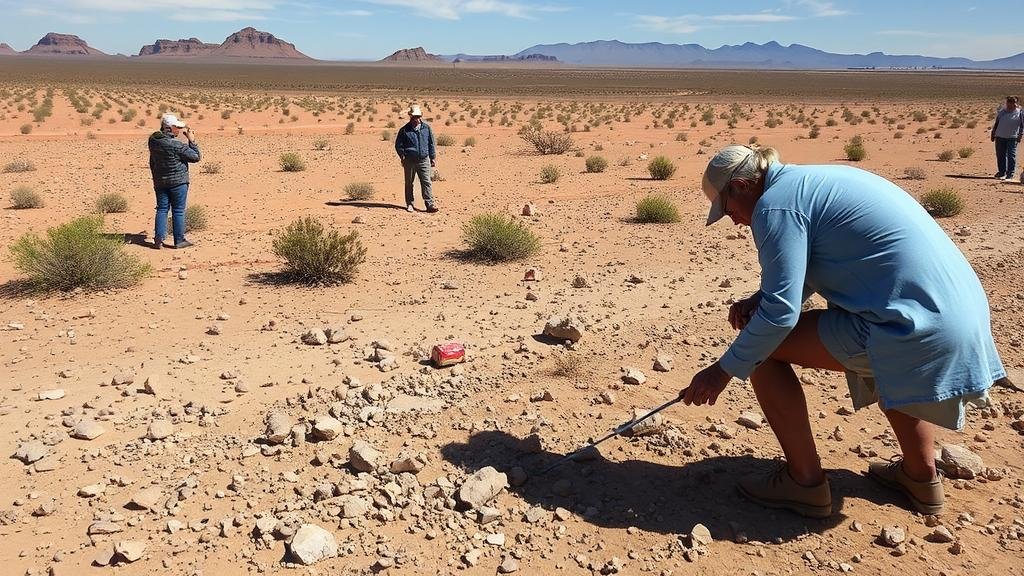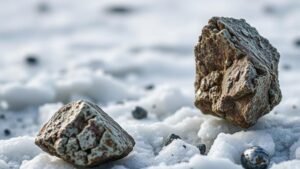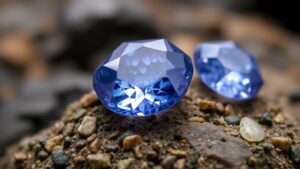Searching for meteorite fragments in the broad expanses of the Jornada del Muerto desert, where cosmic debris might have landed.
Searching for Meteorite Fragments in the Jornada del Muerto Desert
The Jornada del Muerto desert, located in southern New Mexico, presents a unique opportunity for rockhounds and mineral collectors to search for meteorite fragments. This expansive desert is not only rich in geological history but has also seen its fair share of cosmic debris. Understanding the geology, history, and best practices for collecting meteorites in this area can enhance both the thrill of discovery and the success of your expedition.
Understanding the Geography and Geology
The Jornada del Muerto spans approximately 135 miles and is characterized by a stark landscape of sandy soil, gravel plains, and scattered volcanic rocks. This arid environment is classified as a basin and range terrain, providing ideal conditions for spotting meteorites due to its minimal vegetation and contrasting colors.
The geological composition of the area includes:
- Lava flows from ancient volcanic activity
- Alluvial deposits from erosion
- Pleistocene-aged sediments
These geological features make it easier for collectors to identify meteorites, which often appear as dark, metallic fragments against the lighter desert floor.
The Cosmic Connection: Meteorite Landings
Throughout history, numerous meteorites have been documented as landing in and around the Jornada del Muerto. Notably, the 1940 “Jornada del Muerto†meteorite fall produced multiple fragments, contributing significantly to scientific research. Meteorites typically fall to Earth at speeds of 11-72 kilometers per second, and many survive the atmospheric entry, landing unscathed in this desolate environment.
According to NASA, about 17,000 meteorites have been discovered globally, with many of these found in desert regions like the Jornada del Muerto due to their visibility and reduced vegetation cover. unique conditions in this desert can also preserve meteorite fragments, making them easier to locate.
Best Practices for Meteorite Hunting
As you embark on your quest for meteorite fragments, consider implementing the following best practices:
- Preparation: Equip yourself with tools such as a magnet, GPS device, and a sampling kit to collect and analyze specimens.
- Research: Before heading out, familiarize yourself with common meteorite types, such as chondrites and achondrites, to help in identification.
- Observation: Pay attention to surface texture, color, and fusion crust, which can indicate a meteorite. Weighing a piece against known meteorite weights can also be informative.
- Respect Local Regulations: Ensure you have the necessary permissions or permits for collecting meteorites in this region, as certain areas may be protected.
Real-World Applications
Finding meteorite fragments can enhance both individual collections and scientific knowledge. Meteorites can offer insights into the early solar system, the formation of planets, and even clues about extraterrestrial life. Collectors have reported selling rare specimens for thousands of dollars at auction, demonstrating the economic potential of meteorite hunting.
Also, participating in meteorite research can contribute to the broader scientific community. Many amateur rockhounds establish connections with scientists and contribute discovered meteorites for analysis, thereby helping to advance geological and astronomical research.
Conclusion: Actionable Takeaways
The Jornada del Muerto desert offers an unparalleled adventure for rockhounds and mineral collectors looking to search for meteorite fragments. By understanding the region’s geology, adhering to best practices for hunting, and recognizing the scientific significance of your finds, you can turn a simple expedition into a meaningful journey of discovery.
Prepare carefully, stay informed about the landscape and potential discoveries, and most importantly, enjoy the hunt for these cosmic treasures that can tell the story of our universe.



